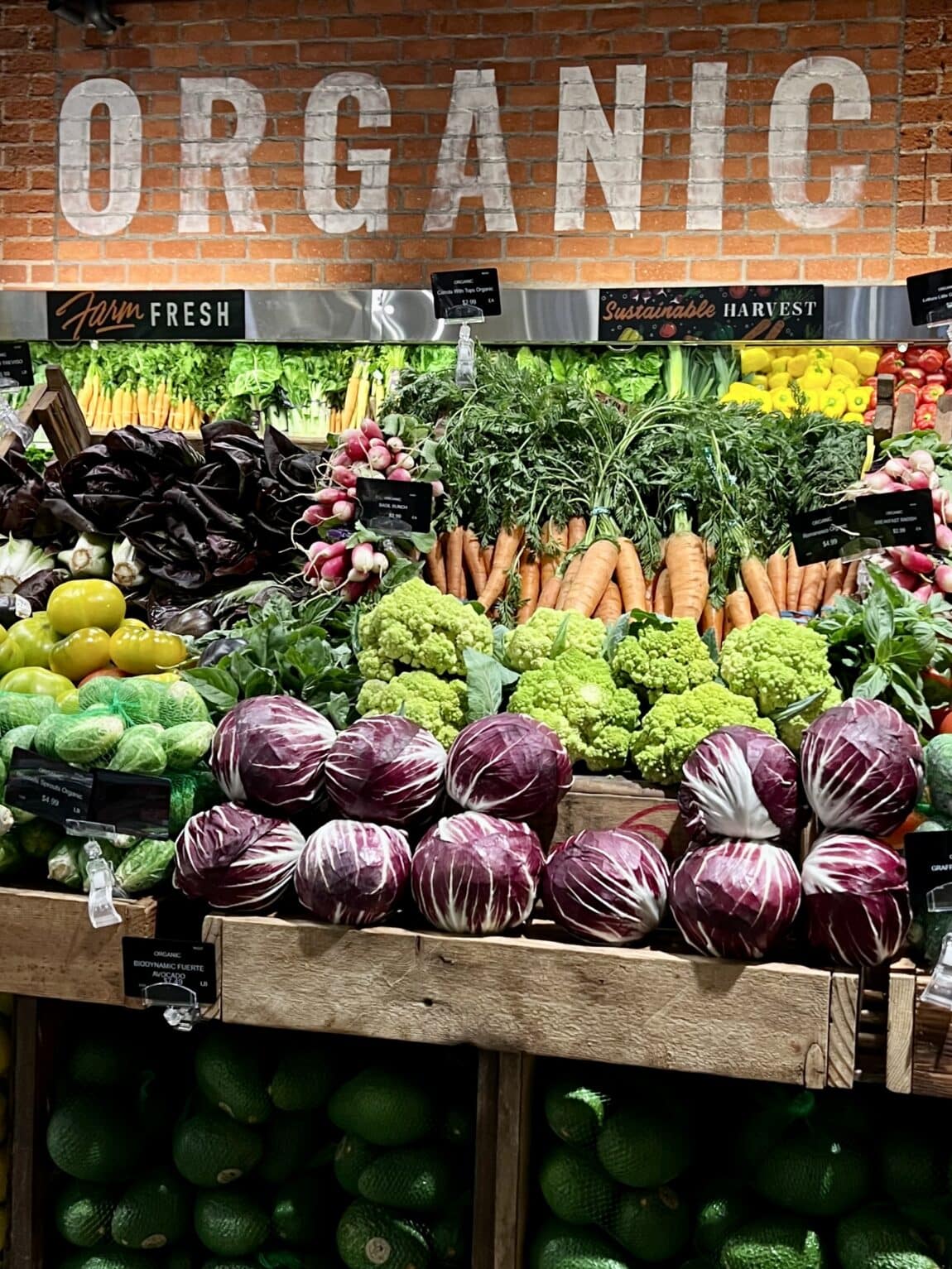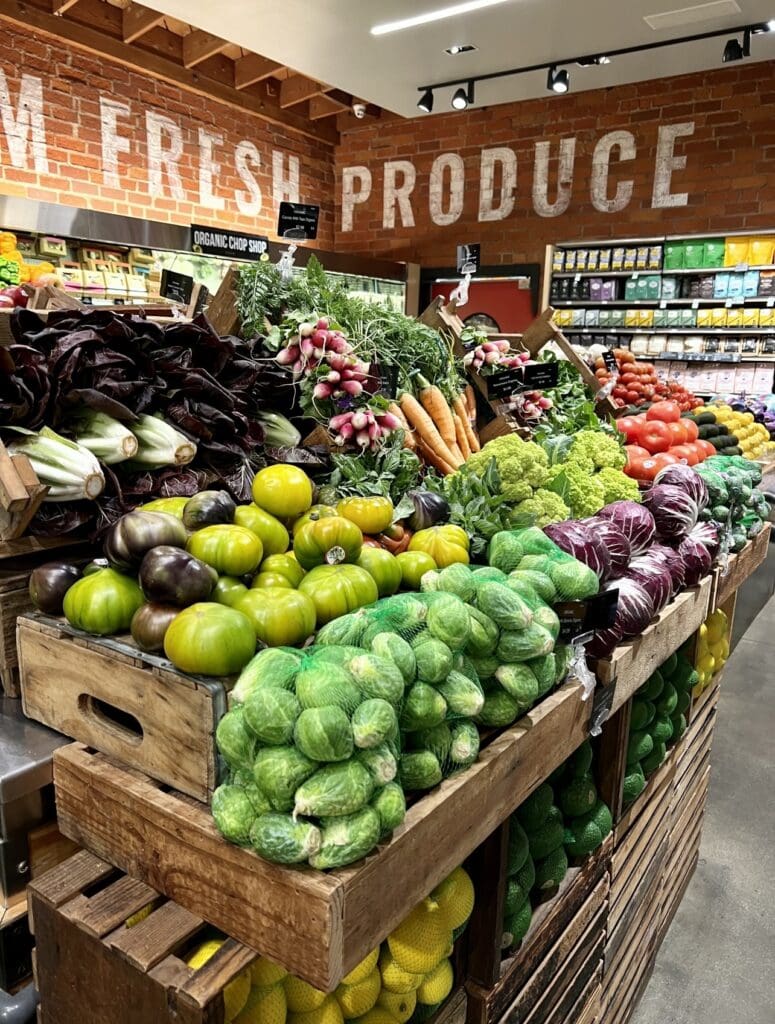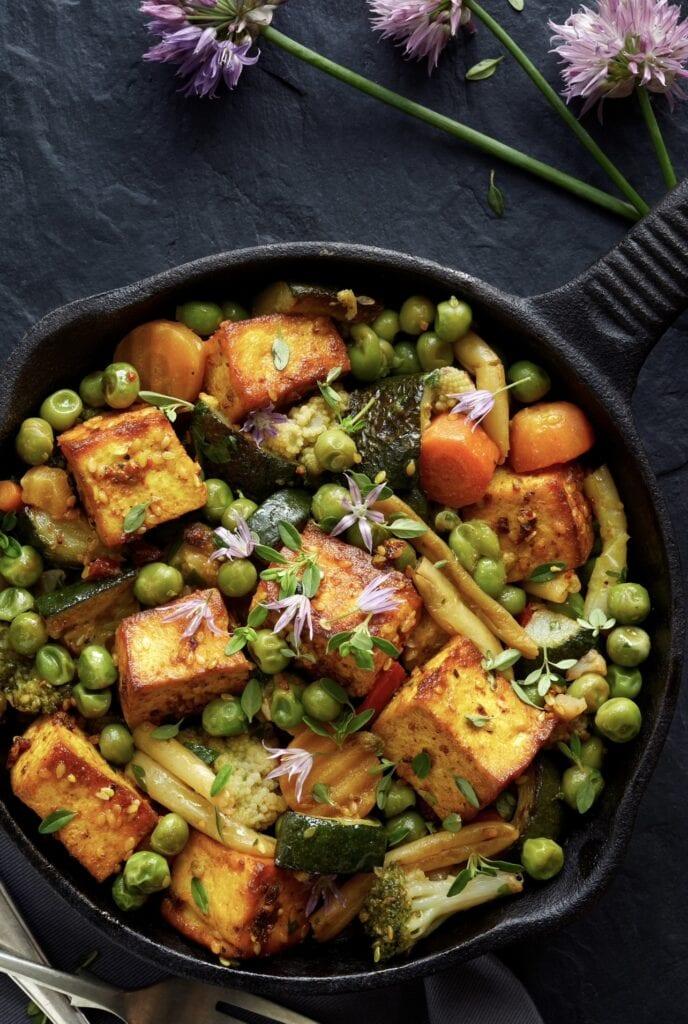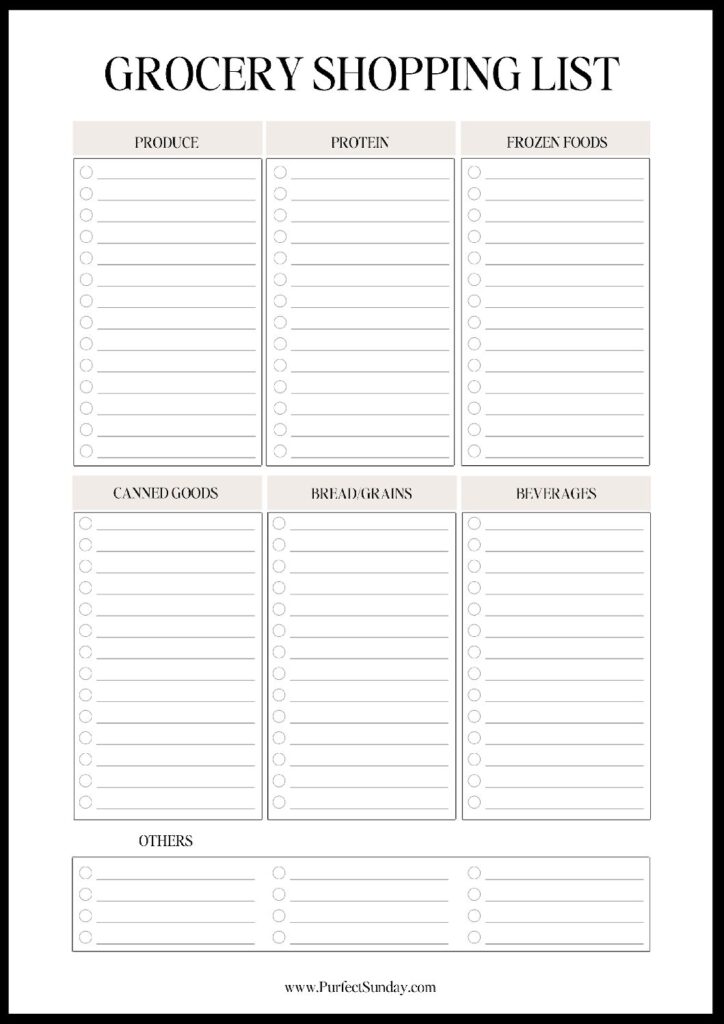
The 13 Surprising Grocery Shopping Hacks of Healthy Women
Do you ever wonder how healthy women always seem to make the right choices in the grocery store? Wandering through the grocery store can lead to a cart full of mouthwatering snacks and treats and your best intentions left behind.
Well, I will share some surprising grocery shopping hacks that healthy women use to navigate the aisles and make the best choices for their health. By following these shopping hacks, you’ll be on your way to eating healthier and feeling better. Read on to learn these strategies to make the best decisions the next time you’re at the grocery store. Your body will thank you for it!
Surprising Grocery Shopping Hacks of Healthy Women
Make A Grocery List and Stick To It
Writing a grocery list is such a simple hack, but it might be the biggest money-saving hack on the list. You may also be surprised at how few people actually do it.
Before writing your list, plan what you want to cook or eat for the upcoming week. Then take inventory of what you already have in the refrigerator and pantry to avoid buying more of the same food you already have. This will minimize the chance of throwing away unused food you could not use before it went bad. Thus saving you money.
Never Shop On An Empty Stomach
The first rule of grocery shopping is to never shop on an empty stomach! When you’re hungry, you’ll start looking for a quick way to raise blood sugar levels as quickly as possible. That usually ends up being lots of sugary and salty high-carb foods. Instead, plan to go grocery shopping after you eat. This can help you avoid buying more than you need and save some money.
Shop The Perimeter
Navigating a grocery store can be overwhelming when trying to make healthy choices. This makes shopping the store’s perimeter possibly the single most useful hack for healthy shopping. This means sticking to the outer edges of the store where the fresh produce, meat department, dairy (vegan alternatives included), and bakery are typically located. By doing this, you avoid the highly processed and packaged foods that are usually found in the center isles. This simple strategy can help you make healthier choices, prevent impulse buys and save money.
Avoid The Dirty Dozen
The “Dirty Dozen” are the 12 non-organic fruits and vegetables highest in pesticide residues. Not all grocery shopping budgets will accommodate buying everything organic. But if possible, avoid buying conventional when it comes to the items on this list to help minimize your exposure to pesticides.
- Strawberries
- Spinach
- Kale, Collard, and Mustard Greens
- Peaches
- Pears
- Nectarines
- Apples
- Grapes
- Sweet Bell Peppers and Hot Peppers
- Cherries
- Blueberries
- Green beans
Shop Seasonally
While planning your shopping list, focus on fruits and vegetables that are in season. Before being imported, out-of-season produce is usually picked early in its ripening process so it doesn’t spoil before reaching its final destination. On the other hand, locally-grown produce is able to grow until just before peak ripeness. The result is better-tasting fruits and veggies with more nutritional value.
Read Labels Carefully
One of the secrets to finding the healthiest food in each aisle is to familiarize yourself with all the verbiage the food industry uses. When an item is listed as “low sodium” or “fat-free,” extra sugar is often added to compensate for the lost taste. Getting in the habit of always scanning the nutrition label and ingredients can help you keep a look out for hidden ingredients and may be one of the most important grocery shopping hacks you can learn. Sugar alone has over 61 different names, making it tricky to spot.
Something to remember is that ingredients are listed by quantity from high to low. That means the closer to the front of the list a form of sugar is, the more the product contains.
Some of the most common names for sugar are:
- Dextrose
- Fructose
- Sucrose
- Maltose
- Corn syrup
- High-Fructose Corn Syrup (HFCS)
- Corn syrup solids
- Brown sugar
- Cane sugar
- Coconut sugar
- Confectioner’s sugar
- Sucanat
- Turbinado sugar
- Molasses
- Maltodextrin
- Agave Nectar/Syrup
- Brown rice syrup
- Evaporated cane juice
- Honey
- Malt syrup
- Maple syrup

Choose Snacks Carefully
The best way to prevent over-snacking on unhealthy foods is to avoid buying them. If you are a big snacker, plan ahead to buy healthy and filling snacks. Options high in protein and low in sugar will keep you full and satisfied for longer. Hummus, veggies, plain Greek yogurt with fresh berries, mixed nuts, kale chips, apples and peanut butter, and roasted chickpeas are all great options. If you have a sweet tooth, pick one dessert you can enjoy throughout the week. Chances are, if you buy three different items, you’ll eat all three of them.
Invest In Quality Ingredients
Another grocery shopping hack is knowing when to splurge on quality items and when to save. Good items to splurge on are foods with the highest pesticide-sprayed crops, like those on the Dirty 12 list, and dairy and meat products since non-organic meat and dairy are full of hormones and antibiotics. In fact, approximately 80% of antibiotics sold are for use in animal agriculture.
Buy One New Produce Item Each Week
This is one of my favorite grocery shopping hacks and a fun way to add variety to your diet. Every time you shop, try and challenge yourself to buy one fruit or vegetable you’ve never had before. You can get creative with how you cook it, try out new recipes, and you never know. You may find your new favorite vegetable. In addition to increasing your creativity, you’ll add various nutrients to your diet.
Choose High Fiber Options
Getting enough fiber in you’re daily diet is an important part of being healthy. That’s because fiber helps regulate blood sugar levels, keep hunger in check, and is necessary for a healthy digestive system/process. Children and adults need a minimum of 25 to 35 grams of fiber daily for good health. But most people only consume about 15 grams. To increase your fiber intake, eat more items made with whole grains, beans, lentils, oats, raspberries, avocados, popcorn, and chia seeds.
Stock Up On Frozen Produce
Yes, the grocery store’s frozen section is full of ice cream, frozen desserts, and pizza, but there are many healthy options you should stock up on as well. Pre-cut frozen veggies are great when you’re running short on time. And since frozen foods last much longer, you don’t have to worry about spoilage. And frozen berries can be added to healthy smoothies or oatmeal.
Buy In Bulk
Another strategy that healthy women use is to buy in bulk. Making purchases in large quantities will save money and reduce unnecessary packaging. Bulk buying is especially beneficial for non-perishable items. Grains like dried beans, rice, lentils, quinoa, and oats are great pantry staples that allow you to make healthy choices when cooking at home.
Listen To Your Body
Healthy foods are not one size fits all. If you’re making an effort to make healthier food choices, congratulation…that’s amazing. But know that just because an item is considered healthy doesn’t mean you will always feel good after eating it. That’s why it’s important to listen to your body. If an item makes you feel unwell, other options will probably work better for you.

Foods To Include In Your Grocery List
Want to make healthy shopping a breeze? Fill your shopping list with plenty of nutrient-dense fruits and veggies, healthy fats, proteins, and other items from the list below.
Produce
Include a large variety of colorful in-season fruits and veggies to your list, as they contain the most nutrients. Fruits like apples, oranges, and melons have a long shelf life, as do sweet potatoes, carrots, celery, tomatoes, and zucchini.
Dairy Products
Milk, cheese, yogurt, and butter or vegan alternatives. Strong-flavored cheeses like Parmesan or goat cheese will allow you to use smaller portions without sacrificing taste. And opting for plain yogurt instead of flavored yogurts, which are loaded with sugar and sometimes cornstarch, gelatin, and other unnecessary ingredients.
Proteins
When shopping for meat, try and buy grass-fed organic options. Non-organic meat is full of antibiotics, growth hormones, and pesticides. Healthy plant-based proteins include tofu, tempeh, seitan, and legumes.
Bakery
When shopping for bread, look for “whole wheat” or “whole wheat flour” as the first ingredient listed on the label. Whole wheat bread contains all parts of the grain kernel, more fiber, and fewer calories. According to a 10-year Harvard study completed in 1994, people who chose whole grain, high-fiber bread instead of white bread options had fewer heart attacks and strokes.
Grains
Grains like brown rice, beans, lentils, oats, and quinoa should be staples in a healthy pantry. Whole grains are typically high in iron, magnesium, manganese, phosphorus, selenium, B vitamins, and dietary fiber. Several studies have linked them to lower risks of heart disease, type 2 diabetes, cancer, and more.
Seeds And Nuts
Nuts and seeds contain fiber, healthy fats, and vitamins and minerals like iron, calcium, magnesium, selenium, phosphorus, vitamin E, and certain B vitamins. Because blanching and roasting may damage the nutrients in nuts and seeds, it is best to eat them raw whenever possible. Healthy options to include in your diet are hempseeds, chia seeds, and sunflower seeds. And almonds, cashews, and walnuts.
Fats and Oils
Healthy oils to keep in the kitchen include coconut, olive, and avocado oil. Use them in soups, salad dressing, and cooking. Butter, ghee, or their vegan alternatives are also good to have on hand.
Canned Goods
Keeping some canned foods in the pantry is a quick, easy way to add some nutrients to your cooking when you’re short on time. Diced tomatoes, beans, chickpeas, jackfruit, olives, corn, and healthy soups. Look for unsalted and low-salt options to cut down on sodium.
Frozen Foods
Research has shown that frozen fruits and vegetables can have just as many vitamins as fresh produce. Frozen fruit without added sugar is great to have on hand for smoothies, and veggies like spinach, peas, corn, cauliflower, and broccoli can be added to stir-fries and soups.
Snacks
A few healthy snack options are dried fruit (no sugar added), nuts, roasted seaweed, hummus and veggies, kale chips, popcorn, and rice cakes.
Condiments
Good condiments to keep in stock are ketchup, mustard, pickles, balsamic vinegar, olives, and salsa. When buying items like salad dressing and peanut butter, read the ingredients first, as some brands are loaded with sugar.
Drinks
Low-sugar drink options like flavored sparkling water and unsweetened tea can quench your thirst without adding extra calories to your diet. If you enjoy juice, check the label and ensure it’s 100% fruit juice.

Next time you go shopping, consider implementing some of these grocery shopping hacks and strategies into your routine. Shopping the perimeter, buying in bulk, avoiding processed foods, shopping at odd hours, and planning ahead can all make a big difference in your overall health. Incorporate just one or two of these shopping hacks and see how it works for you. We think you’ll be pleasantly surprised!
Xx Monti

